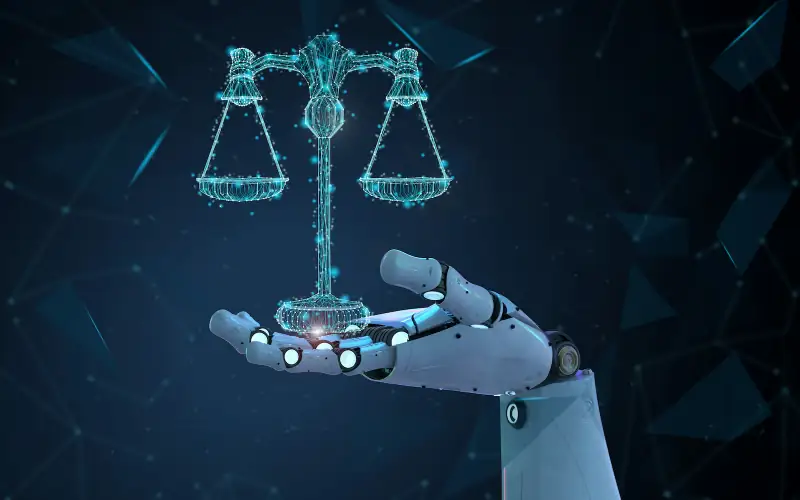The Legal and Compliance sectors are at a pivotal juncture, faced with the daunting task of managing an ever-expanding universe of regulations, policies, and sensitive data. The complexity of their work, rooted in the meticulous analysis of legal documents, precedent, and legislation, positions these fields uniquely to benefit from advancements in artificial intelligence (AI), specifically Generative AI (GenAI).
Decoding the Intricacies of Legal Work
Within the intricate world of Legal and Compliance, professionals are tasked with a Herculean set of responsibilities. They must sift through mountains of data, dissect complex documents, and distill this information into actionable advice. This process, grounded in the rigorous assessment of historical trends and legal judgments, is both time-consuming and prone to human error, presenting a ripe opportunity for AI to bring about a paradigm shift in efficiency and accuracy.
Embracing GenAI: A New Frontier for Legal Efficiency
The emergence of Generative AI (GenAI) in Legal and Compliance has sparked considerable excitement among industry leaders. GenAI’s prowess lies in its ability to learn from vast datasets and generate new content, be it text, images, or other media forms, mimicking human-like outputs. This technology stands to revolutionize traditional practices by automating routine tasks such as document analysis, contract reviews, and risk assessments, thus freeing up legal professionals to concentrate on more strategic endeavors.
The Evolutionary Path of Legal and Compliance Practices
The journey towards the full adoption of GenAI in Legal and Compliance is marked by an evolutionary process that transitions from manual, labor-intensive activities to sophisticated AI-driven automation. This progression encompasses several stages, from the initial reliance on human labor to the integration of Robotic Process Automation (RPA) and ultimately, the implementation of GenAI for complex data analysis, content creation, and decision-making processes.
Exploring the Potential and Pitfalls of GenAI
The promise of GenAI to transform Legal and Compliance work is immense, offering not only to streamline operations but also to significantly reduce overhead costs associated with staff-intensive tasks. However, realizing this potential comes with its set of challenges, including concerns over data privacy, the reliability of AI-generated outputs, and the adaptability of AI systems to provide precise and contextually accurate analysis.
Immediate Steps Towards Enhanced Operational Efficiency
While the transformative potential of GenAI captures the imagination, there exist immediate opportunities to enhance operational efficiency within Legal and Compliance departments. These opportunities include leveraging existing technologies for Contract Management, Document Management, and employing RPA to automate mundane tasks. Such initiatives can serve as foundational steps, preparing the ground for a more seamless transition to GenAI.
Leveraging RPA as a Catalyst for Change
RPA technology stands out as a practical tool in the interim period before GenAI becomes fully integrated into Legal and Compliance workflows. By automating tasks such as data entry, policy monitoring, and even complex contract analysis, RPA can significantly reduce the dependency on manual processes, enhance accuracy, and improve overall productivity, setting a precedent for the adoption of more advanced AI solutions.
Setting the Stage for GenAI Integration
The shift towards a GenAI-driven future in Legal and Compliance requires thorough preparation and strategic planning. Key to this transition is the need to ensure data integrity, streamline operational processes, and familiarize personnel with the nuances of working alongside AI. Such preparatory steps not only facilitate the adoption of GenAI but also enhance the department’s capacity to leverage AI for high-volume, high-quality output.
Conclusion: A Methodical Approach to Transforming Legal and Compliance
The path to integrating GenAI within Legal and Compliance is complex and requires a nuanced understanding of both the technology’s potential and the current state of legal practices. By methodically advancing through the stages of technological adoption, from leveraging existing tools like RPA to preparing for GenAI, organizations can unlock unprecedented levels of efficiency and strategic insight. This journey promises not only to redefine the landscape of Legal and Compliance work but also to establish a new standard for operational excellence in the digital age.
In essence, the future of Legal and Compliance is intrinsically linked to the strategic implementation of AI technologies. By embracing this evolution, organizations can anticipate significant gains in efficiency, accuracy, and innovation, ensuring they remain at the forefront of their respective industries.
